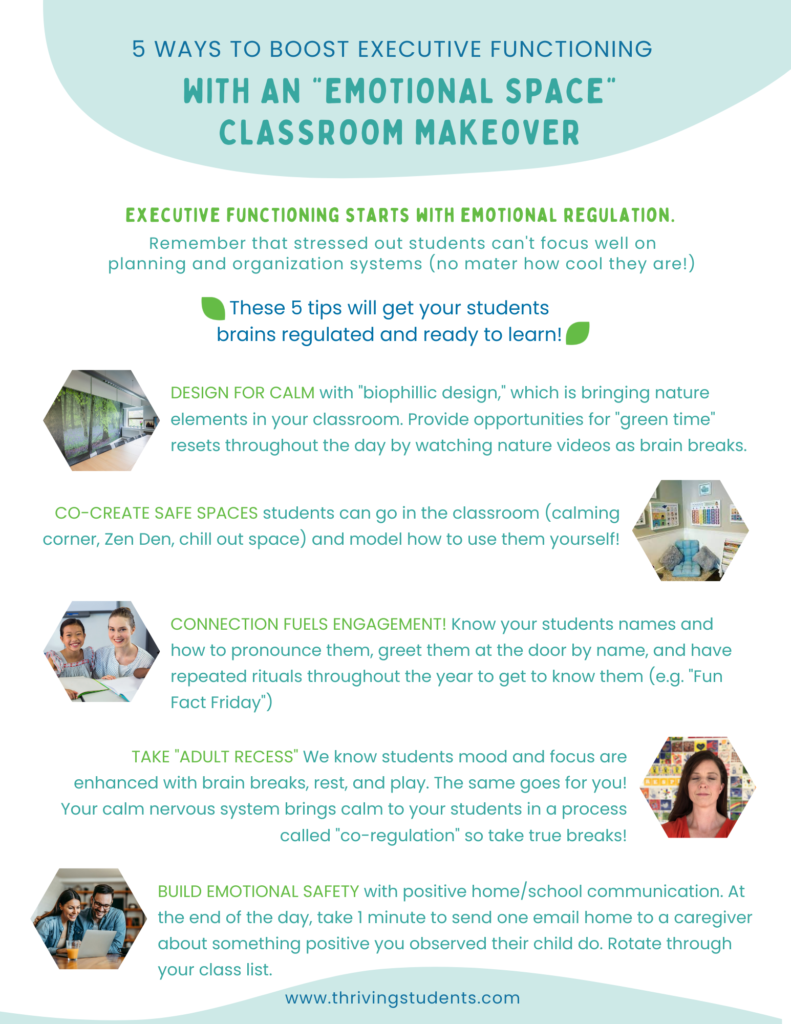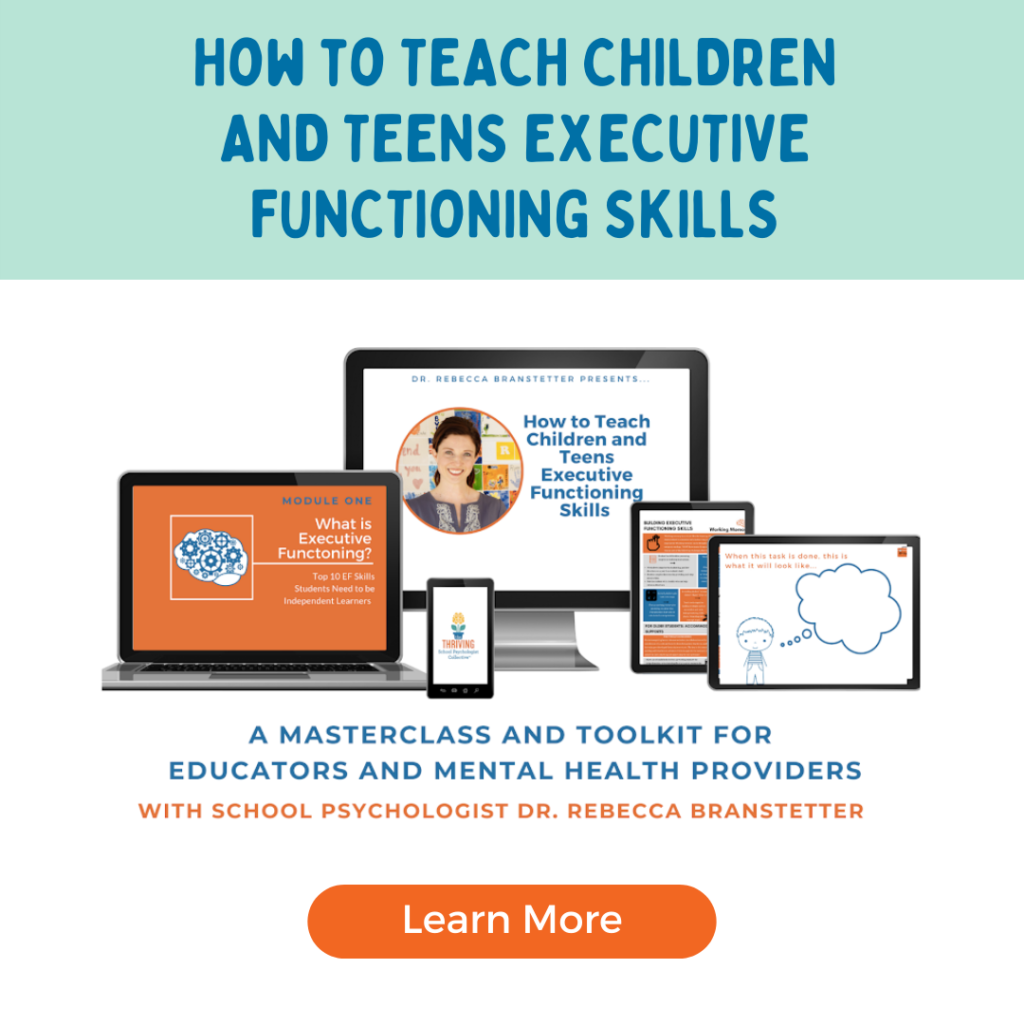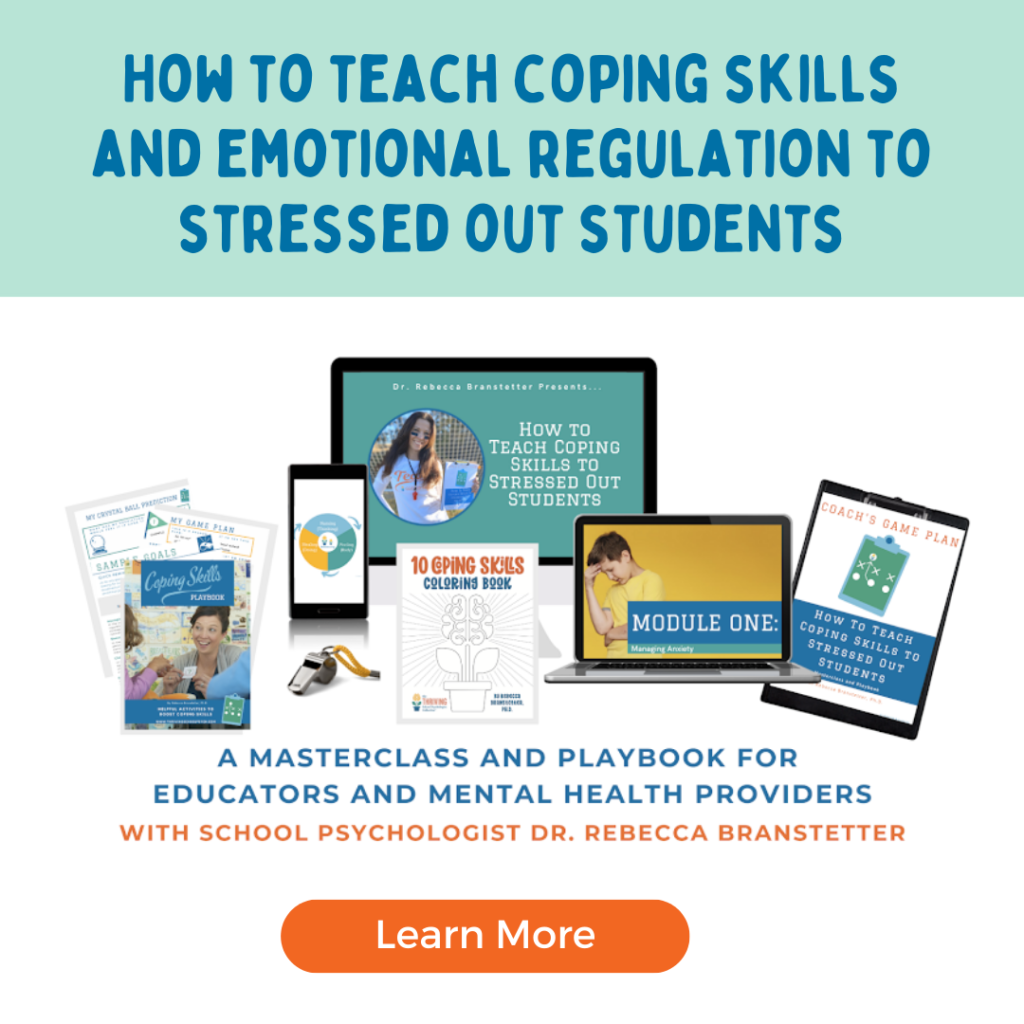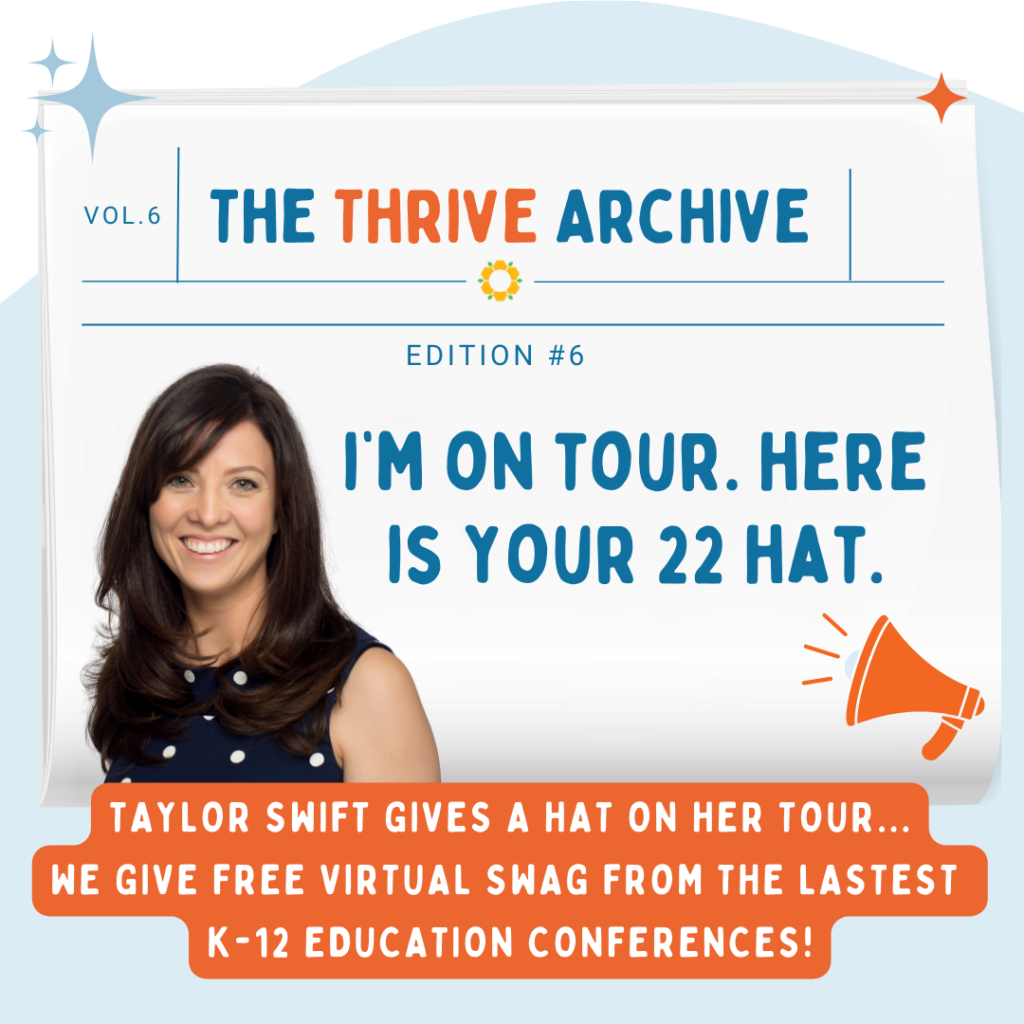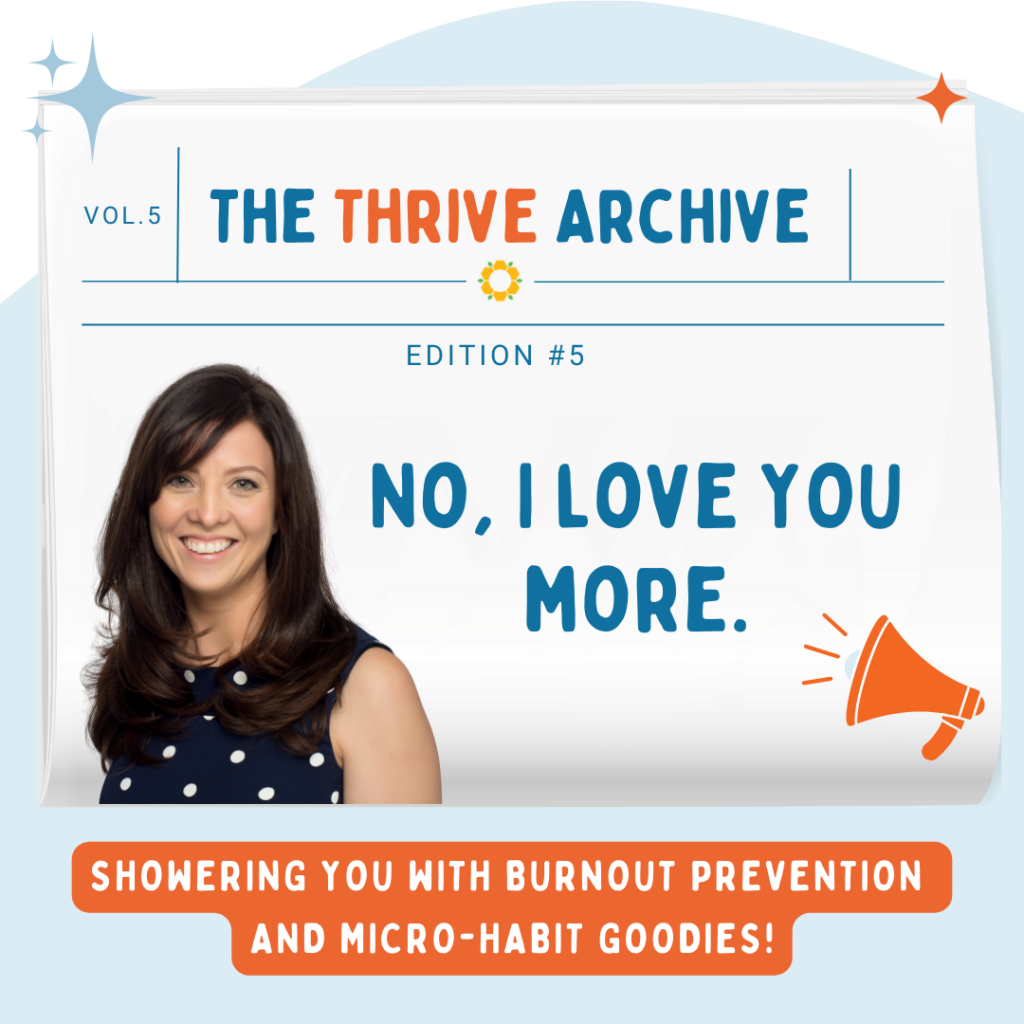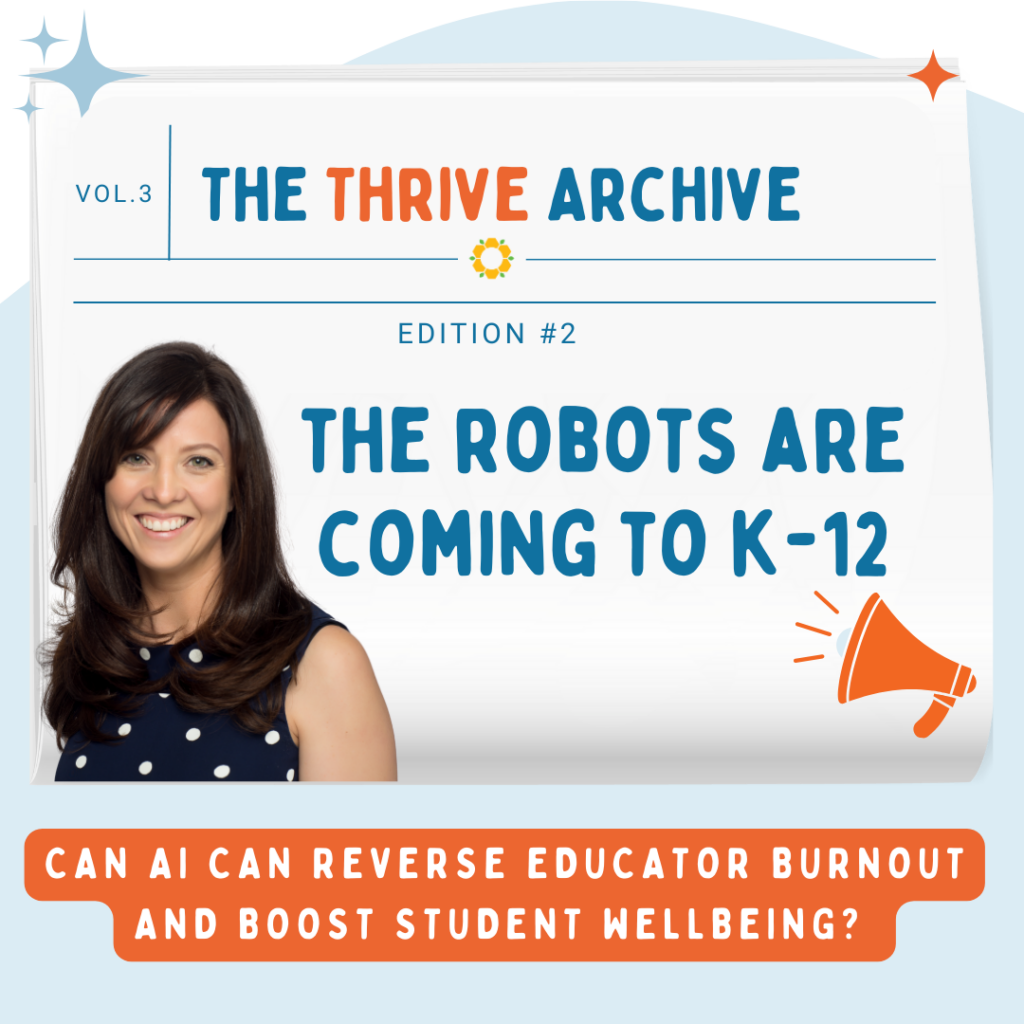- For School Psychologists, For Teachers
by Rebecca Branstetter, Ph.D. School Psychologist
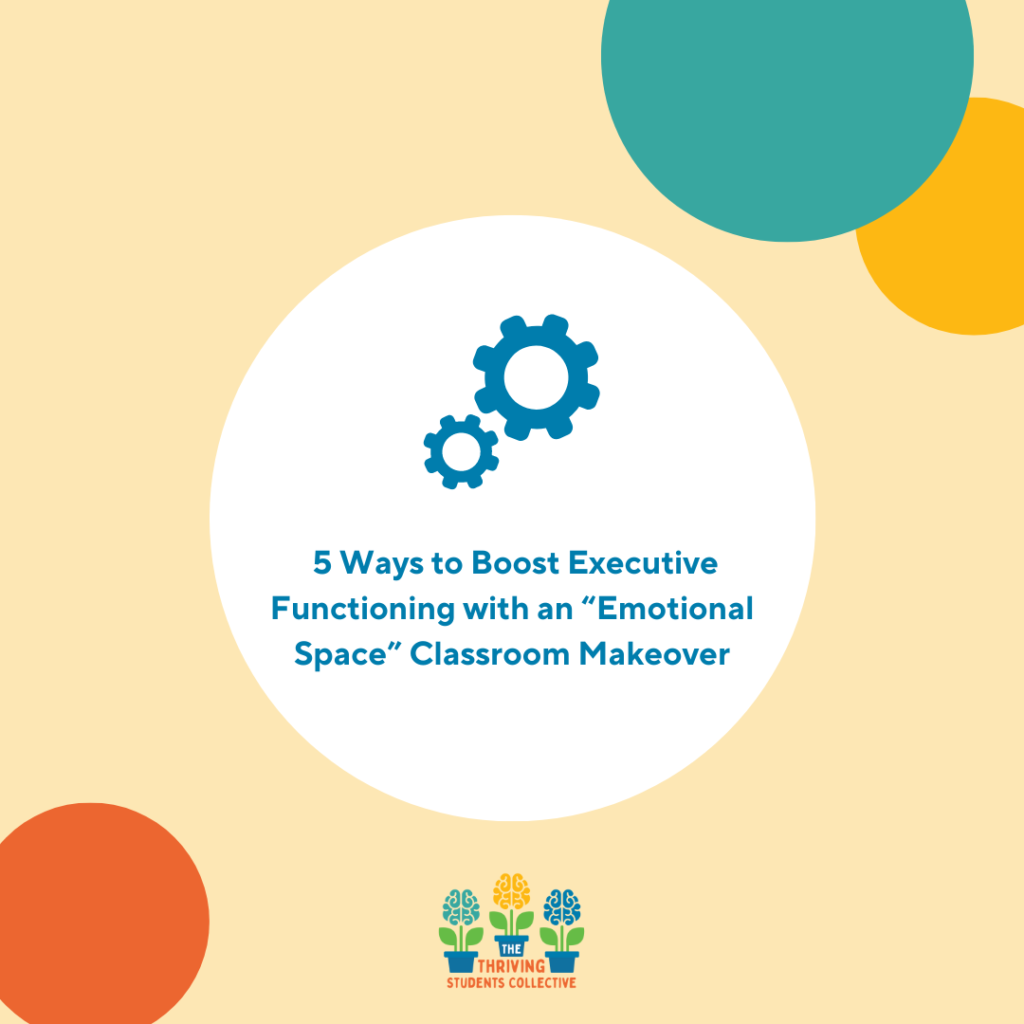
There’s nothing more exciting than a makeover! I mean, really, who doesn’t love that moment when HGTV reveals the final renovation? Or when you get to see striking before/after pics of someone?
That’s how I feel at back-to-school time. As a school psychologist, I love hopping into teachers’ classrooms to help them set up their spaces at the beginning of the year. There’s something so very satisfying about the new, fresh, classroom, full of potential to welcome learners!
When my friend asked me to help set up her new Transitional Kindergarten classroom this summer, I was all in!
As someone who really loves research on how to boost executive functioning and emotional self-regulation at school, I asked her if we could do both a physical space makeover and an “Emotional Space” makeover of her transitional Kindergarten class. She was in!

5 Ways to Boost Executive Functioning with an “Emotional Space” Classroom Makeover
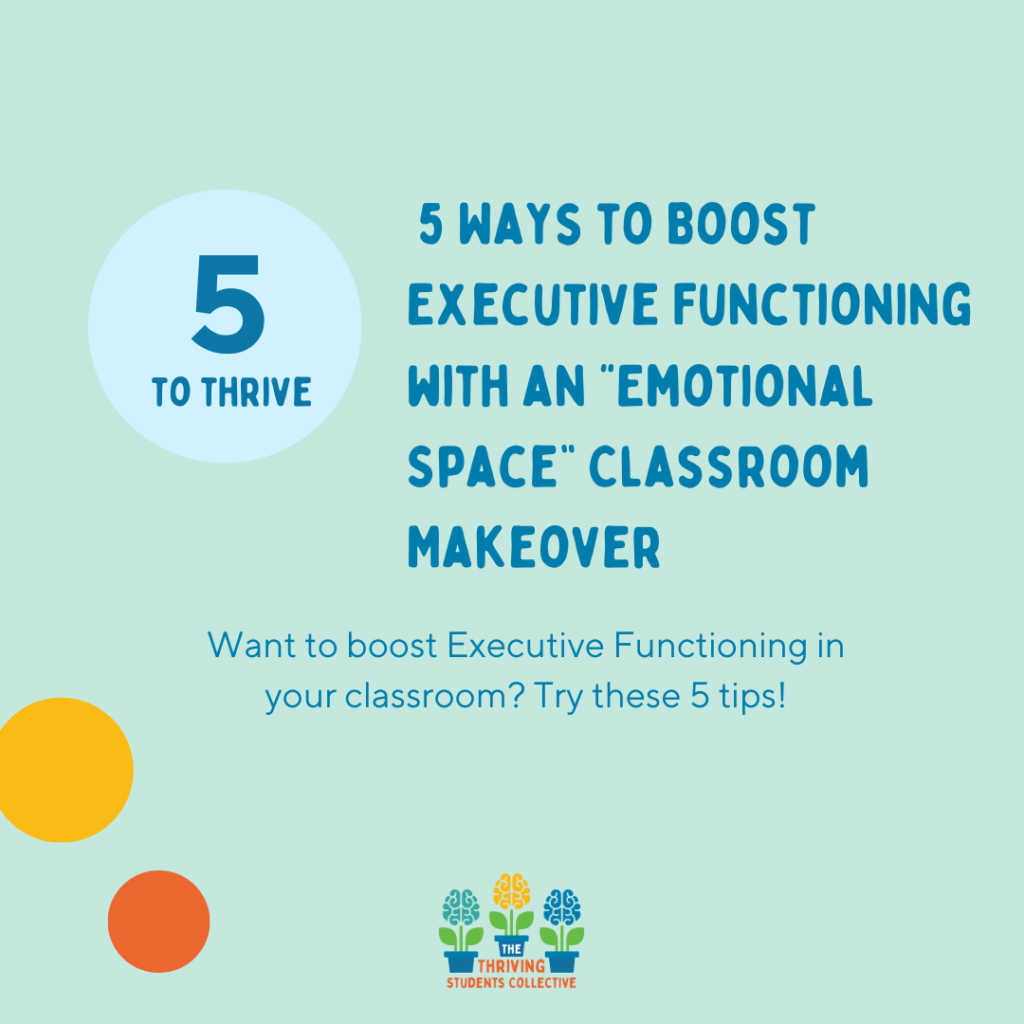
The first thing you need to know about this “emotional space” makeover to boost executive functioning project is what executive functioning is and why it’s so important for learning.
The non-fancy definition of executive functioning is “all the things learners need to reach a goal.” Or as I say to kids, how to be the “Boss in your Brain.” The “Boss in your Brain” can plan, organize, start tasks, stick with tasks, and finish tasks. The “Boss” also needs to be able to control impulses, regulate feelings, and stop and think to make behavioral choices.
So often, when we think of executive functioning, we think of planners and post-its and behavior charts. But before any of that is going to work, students need emotional regulation.
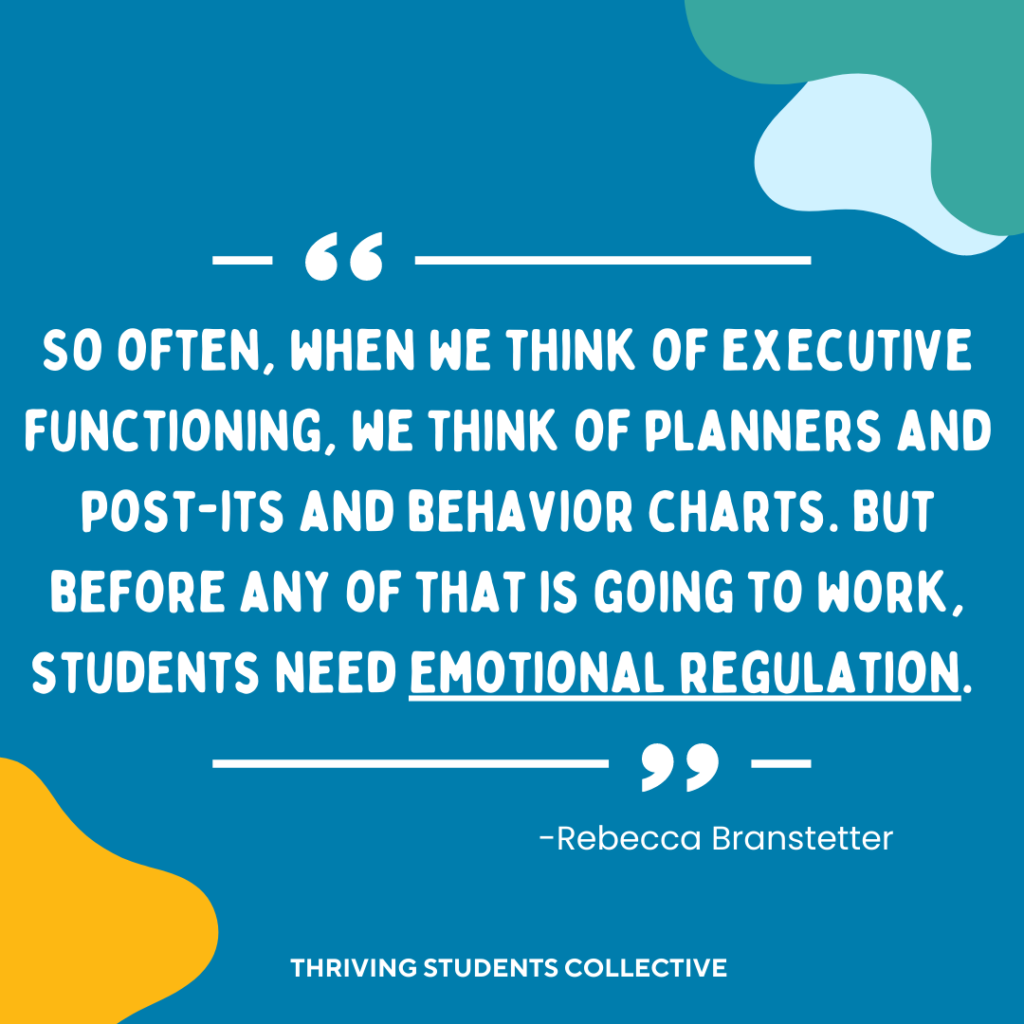
Executive functioning starts with emotional regulation. Stressed out students can’t focus on planning or organizational systems until they’re regulated and emotionally ready.
I know I was ready. I was armed with research, snappy posters, and some goodies from the Container Store…
1) Design for Calm
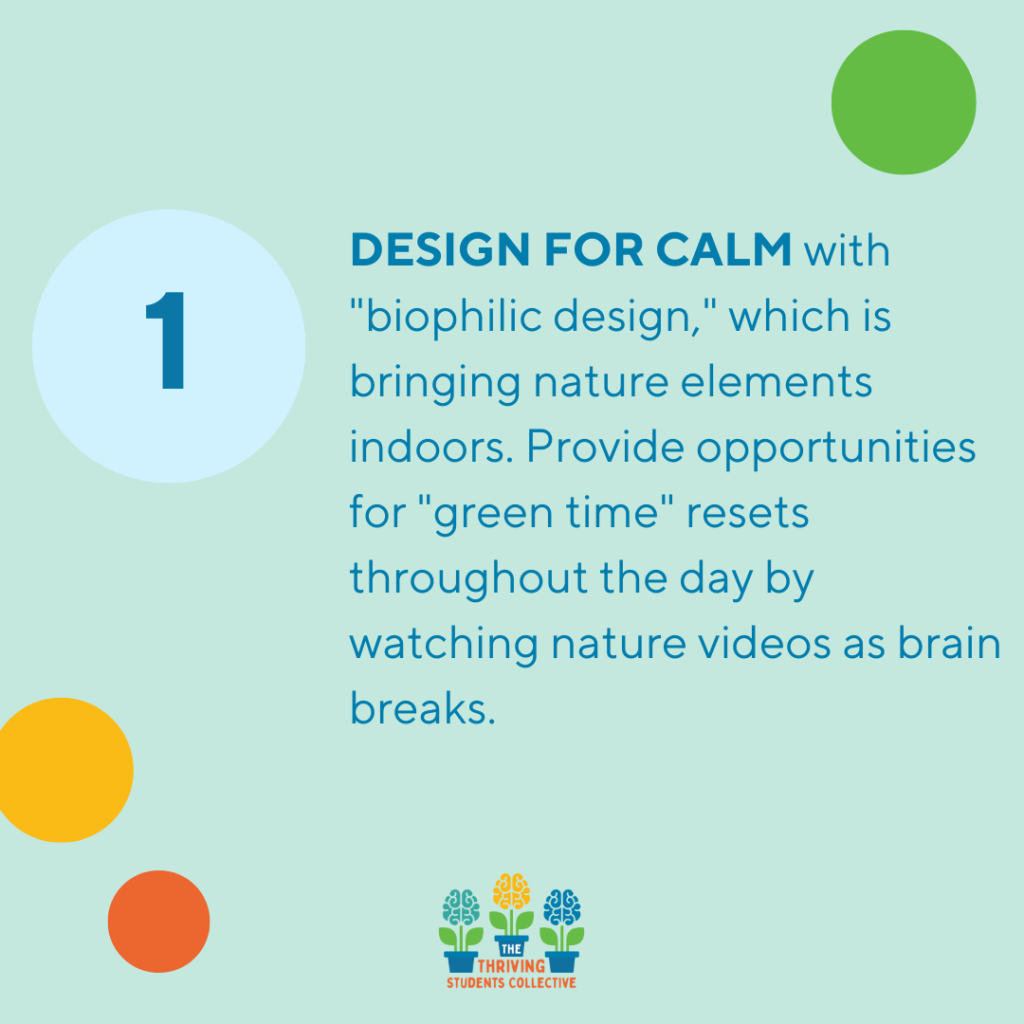
Research shows that being in nature has a calming effect on the nervous system. But what about when you’re indoors, in a classroom?
You can create that same sense of calm through “biophilic design”, which is bringing outdoor nature elements indoors. Research suggests that classrooms with biophilic design are strongly associated with reduced student stress and enhanced learning outcomes.
Here are some simple ways to bring nature indoors:
- Seeing the color green helps us experience a sense of calm, so grab some green paint and change those walls. Or, even easier, use green butcher block paper on on your bulletin boards.
- Bringing plants in the room not only absorbs harmful toxins in the air, but also promotes relaxation. Grab a few houseplants for your classroom, or have your students grow plants that will fill the room.
- Put up art or posters that shows nature scenes
- Put relaxing nature scenes on a tv or projector (and build student choice–do you want to see a waterfall, beach scene, or a Zoo cam today?)
- Put relaxing nature sounds on during quiet work time (and build student choice– birds or waves today?). And if you have student who has sensory challenges, you might have noise canceling headphones available to them to accommodate their needs).
In my friend’s classroom, the walls were….well, not green.
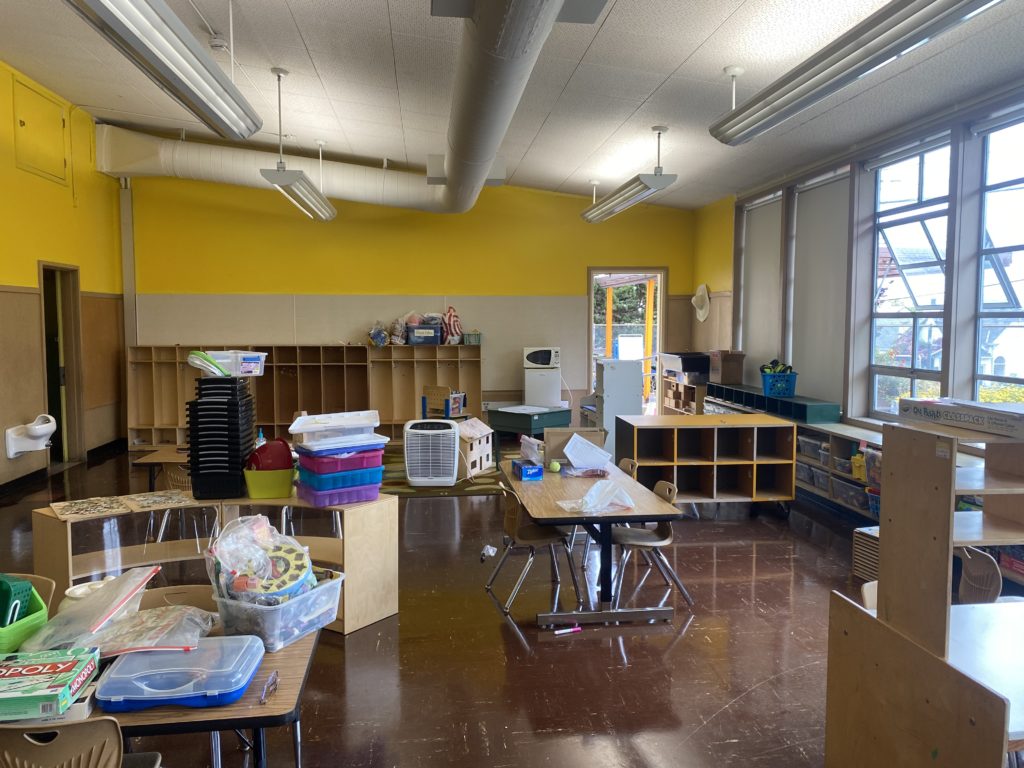
We put in a work order for green paint, but you know how these things go. It’s gonna be a hot second. So in the meantime, here’s my amateur HGTV style mockup of what it will look like.
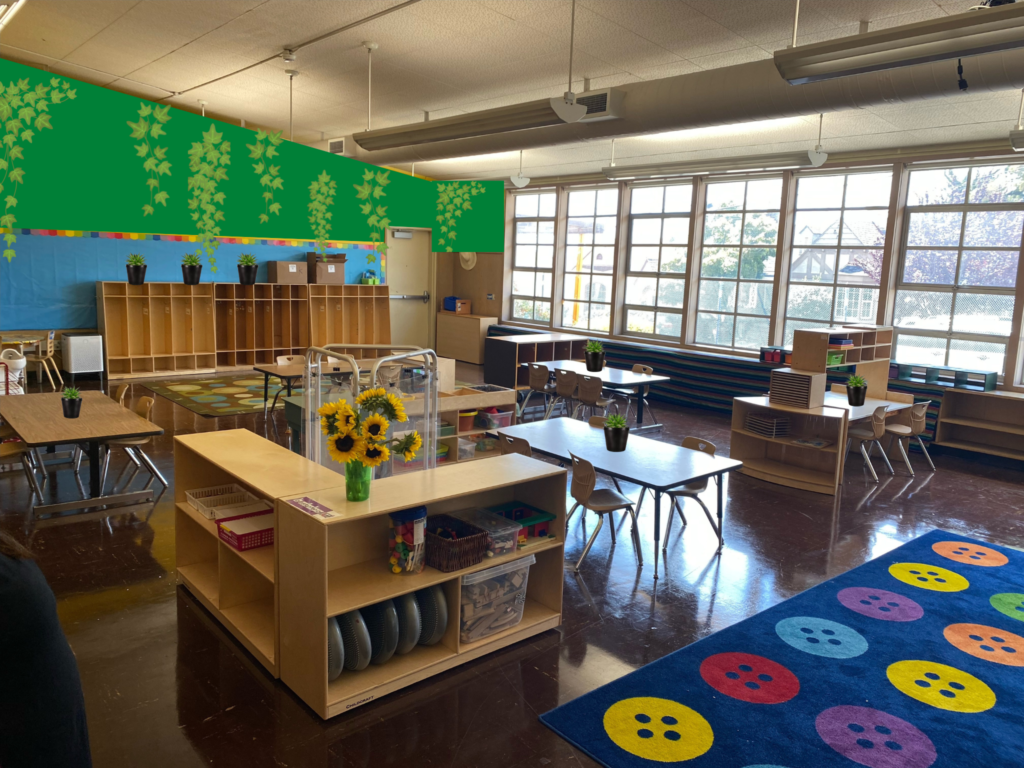
And in the meantime, we did the next best thing and put leaf decals where we could!
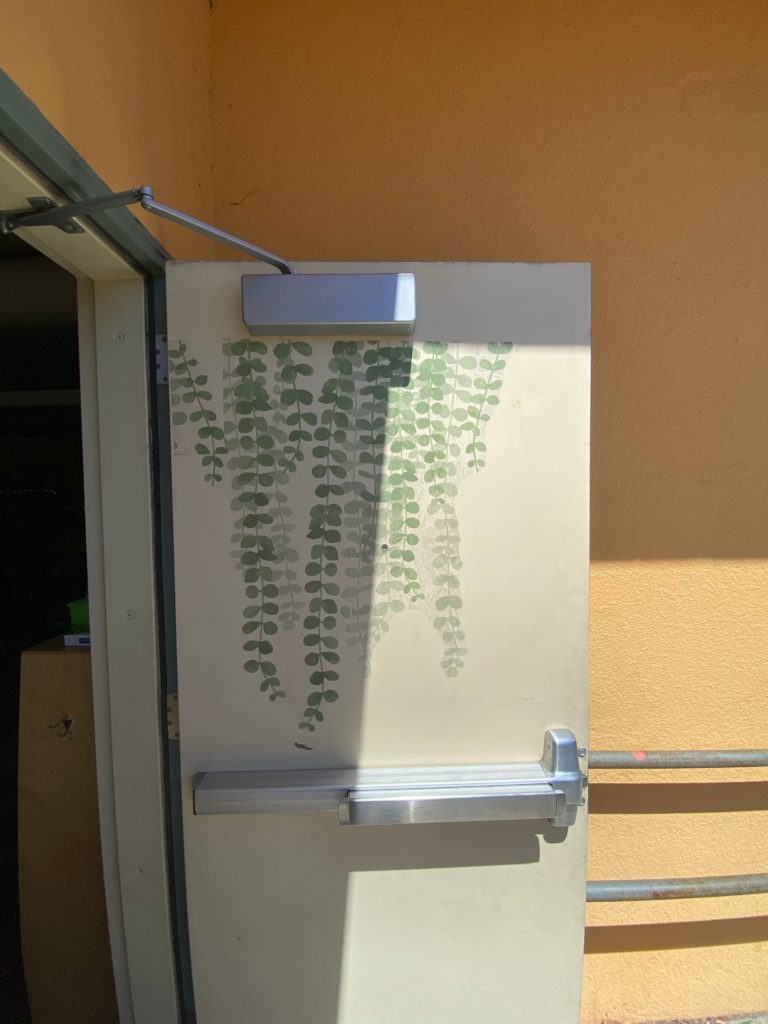
And here’s a link to my Pinterest board of biophilic design. #designgoals #calm
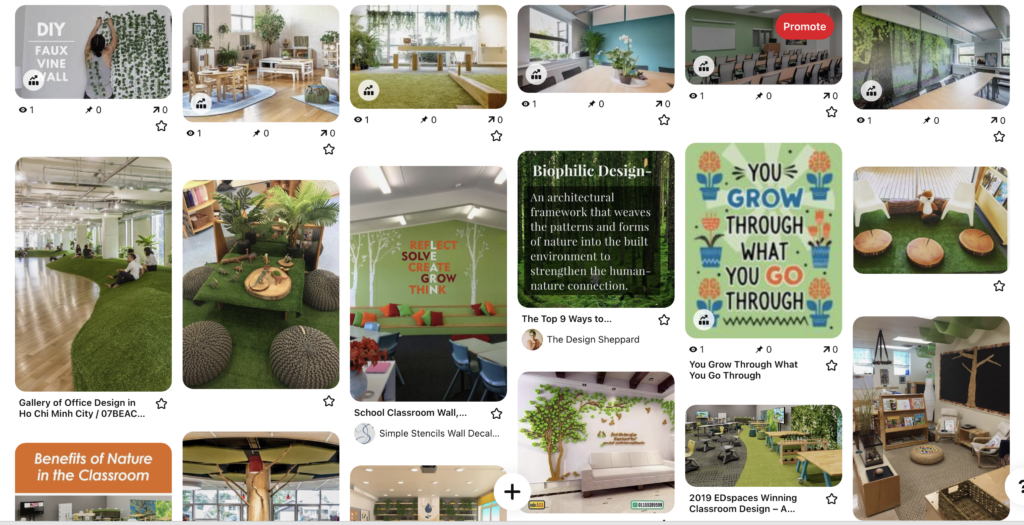
2) Co-Create Safe Spaces in the Classroom
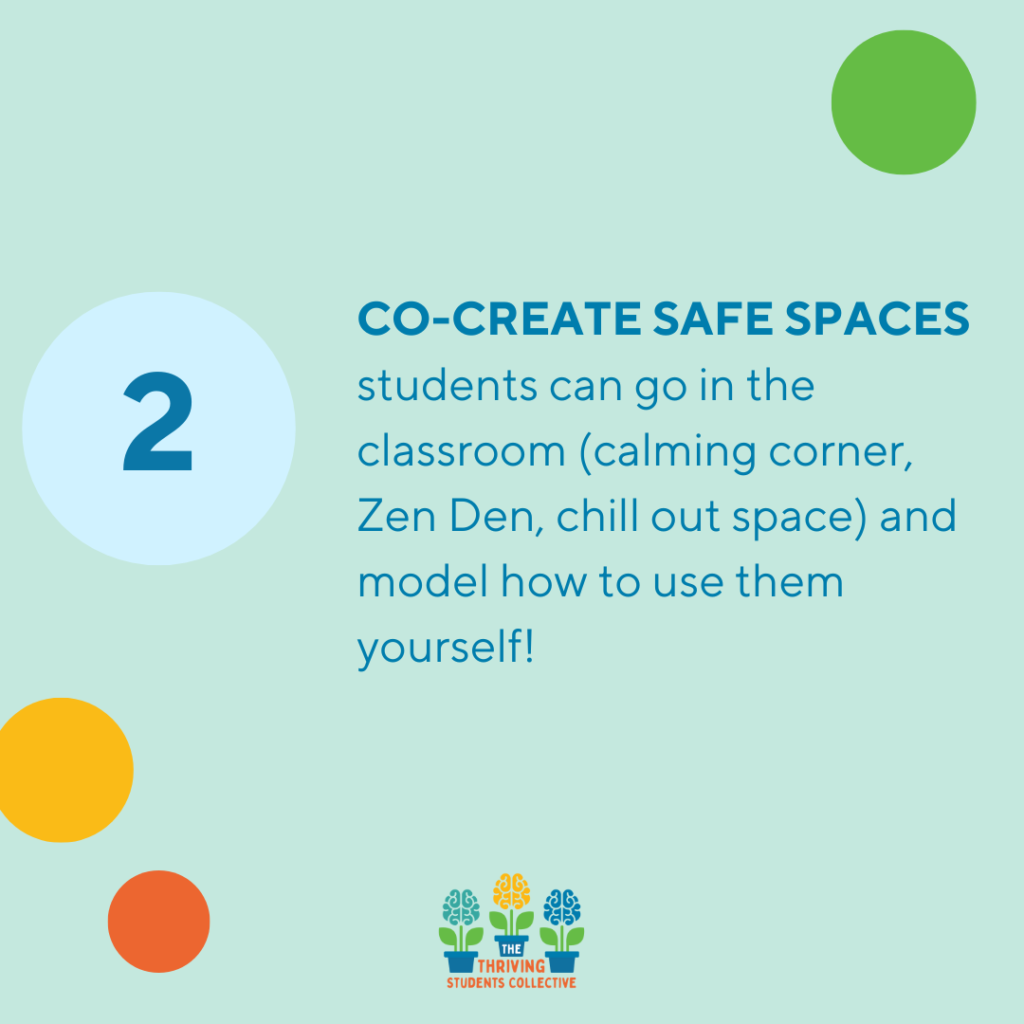
It doesn’t cost a lot to create a space in your classroom where kids can go to take a break. You can probably even rustle up some plastic baskets and get donations for comfy seating from your community like we did. But if you must go to the container store, well, I say go for it…
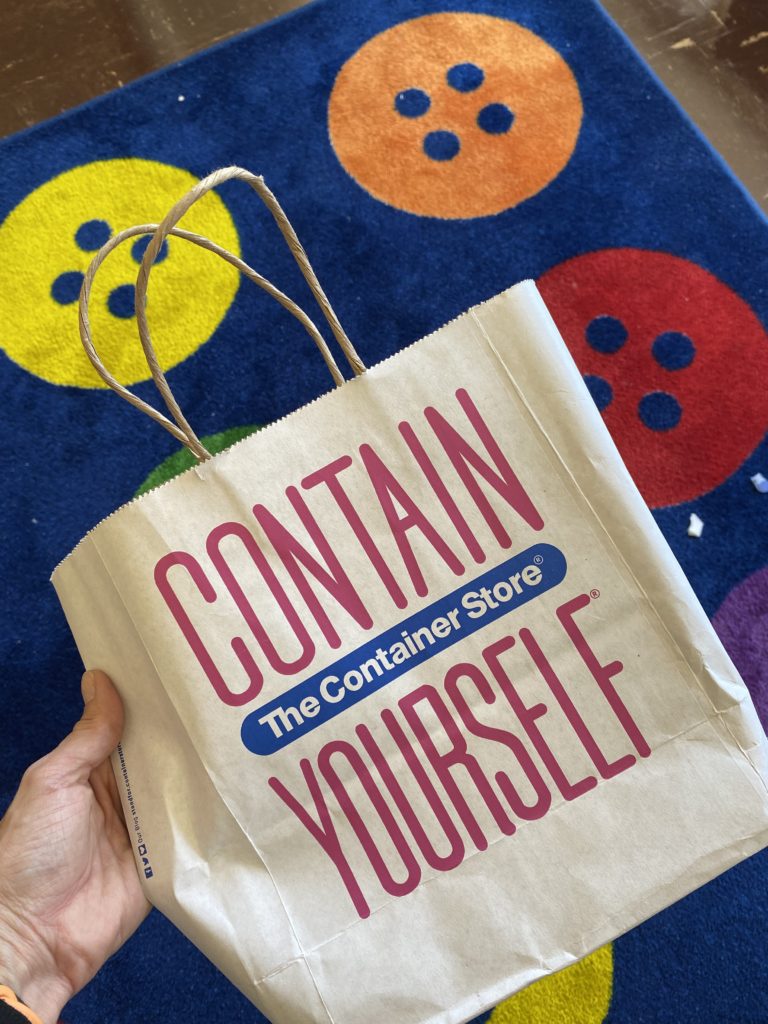
When we think about executive functioning, we have to remember that even as adults, when we feel stressed, we are not “in frontal lobe” where executive functioning occurs. Think about the last time you were stressed–were you ready to tackle a hard task with deep focus? Probably not, since stress puts us in “brain stem” mode–where fight/flight/freeze occurs. For kids, this “brain stem” mode can look like acting out or shutting down.
Enter the calming corner! Or for older students, you can have them come up with a name they like, like Zen Den, Chill Space, or “Check Yo’ Self Before You Wreck Yo’ Self” space (a real name high schoolers came up with that I love).
This is a space for calm. It’s not a place for reward or punishment. It is just a space to be safe with your emotions–positive or negative. You probably have a space like this in your life–a favorite chair to read in, a place in nature, a quiet spot in your home. You might go there to take a personal space break to reboot. That’s what the calming corner can be for your students.
But first, do you find this space calming???
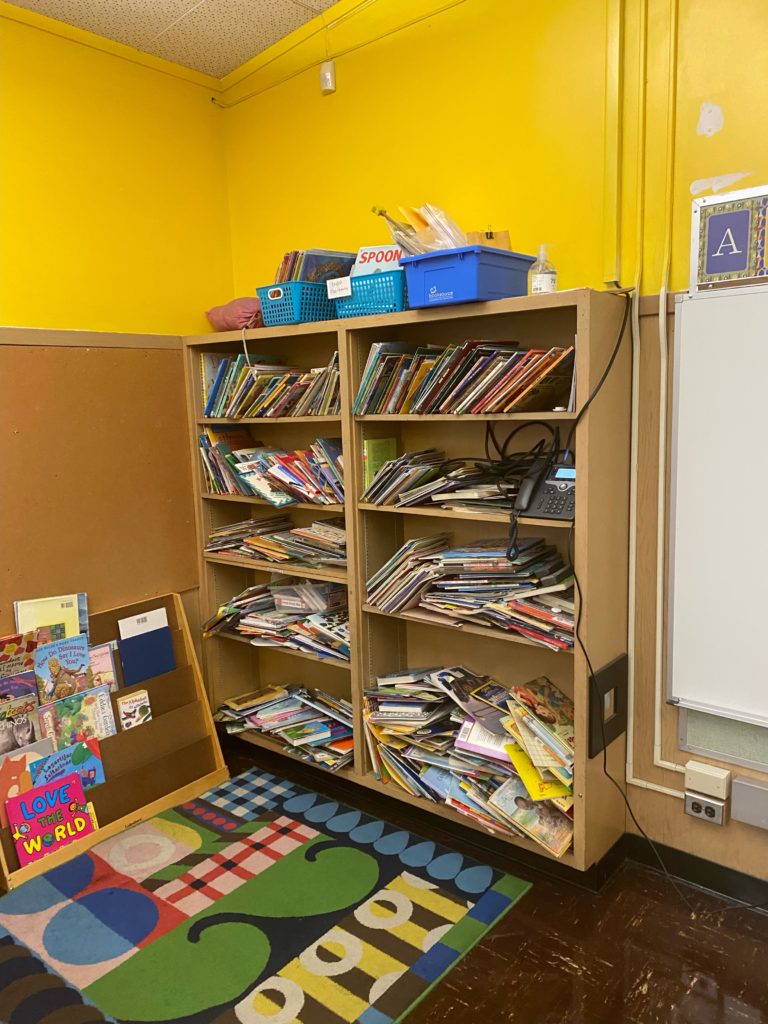
How about this space? Better???
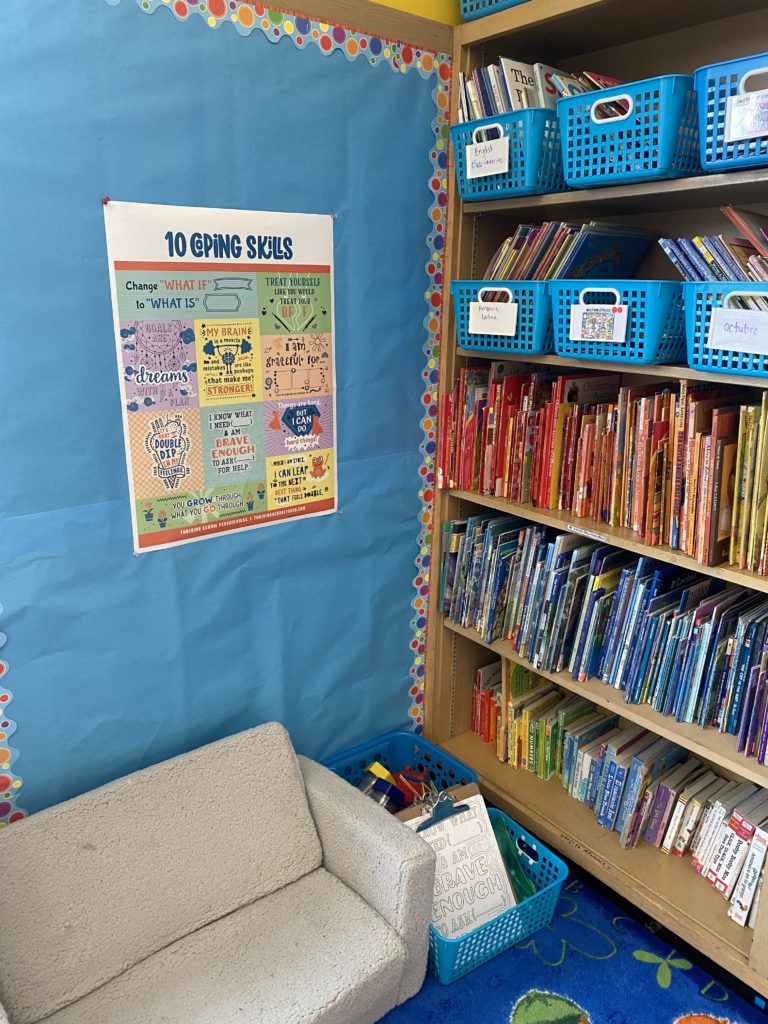
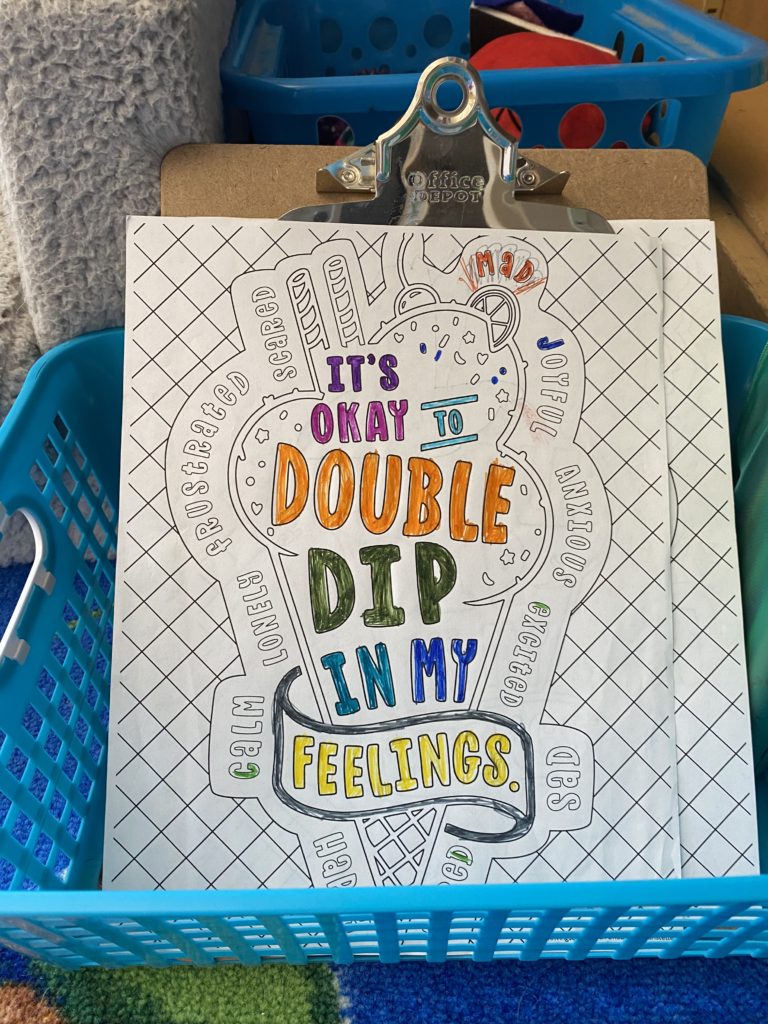
The idea is to have activities that students can do when they are having a hard time.
Some easy ones for littles (TK-5): reading, coloring, listening to music or audiobooks, playing with stress balls and sensory tools, and activities where they can identify and label their feelings like feelings cards, posters with faces and labels of feeling words, books about feelings, etc.
Some easy ones for older students (middle and high school): reading, coloring (yes, older kids still like coloring!), playing with stress balls and sensory tools, listening to music or audiobooks, and activities where they can process their feelings like journaling or doing guided meditations/ mindfulness practices.
It’s worth noting that the more you can empower your students to be thought-partners about what should be in the calming corner, when they can use it, what are the expectations for how long to use it, how do you transition in and out of it, what the theme should be, etc., the more successful it will be because they will take ownership and pride in the space.
For more ideas, check out my Pinterest board of Calming Corners and Zen Dens here!
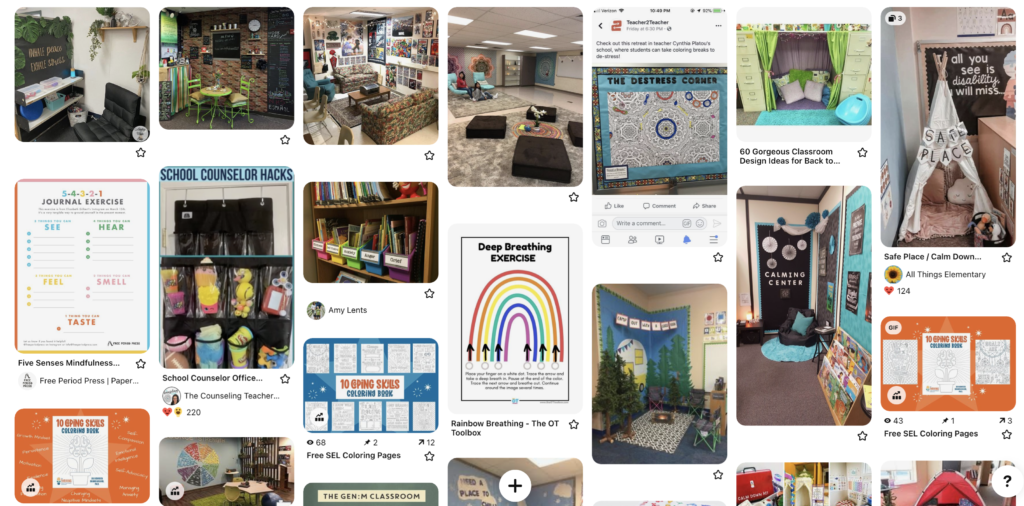
3) Build in Connection in Your Routines
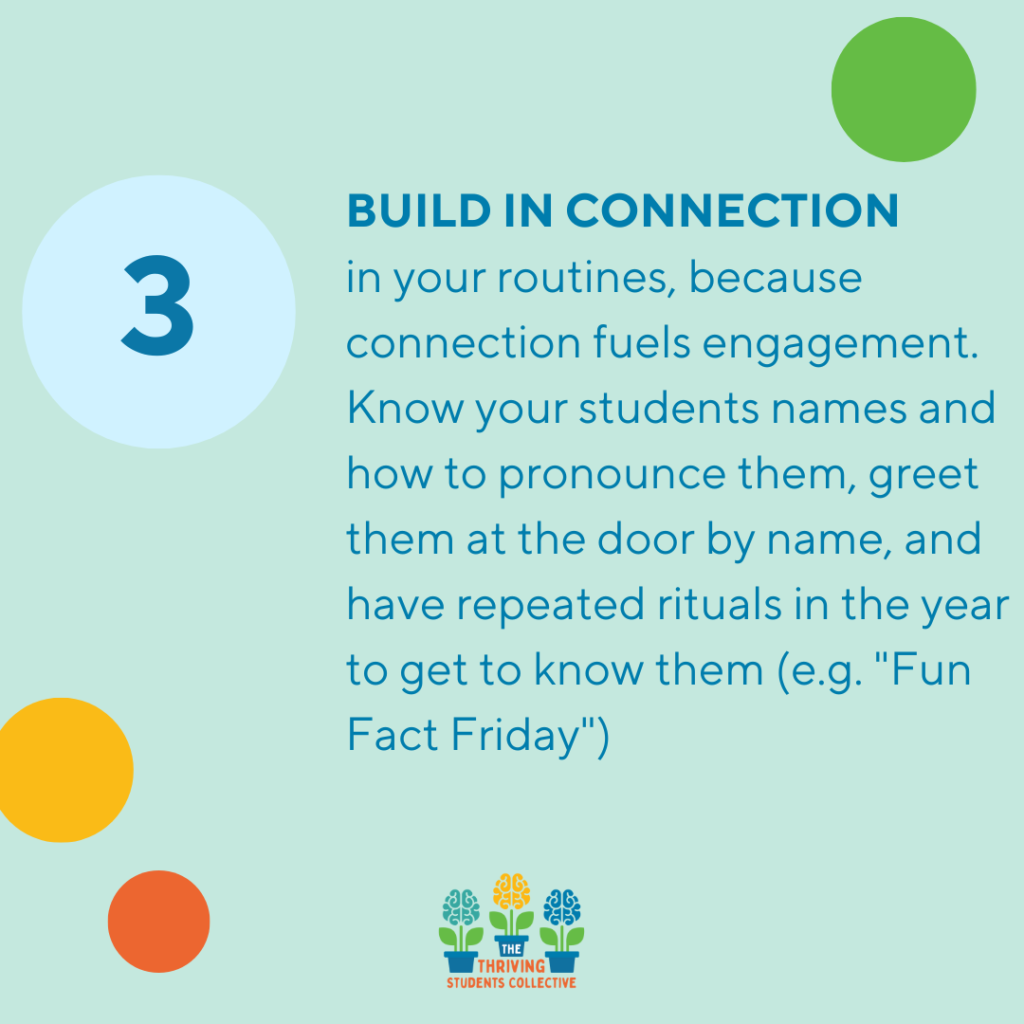
Building physical spaces is a great starting point for emotional regulation and executive functioning. Building safe psychological spaces is even more important! That all starts with connection.
At the beginning of the year, there’s ample opportunities to do icebreakers, name games, and getting-to-know-you activities.
But what about building in rituals and routines for building genuine moments of connection throughout the year? Here’s a few ideas for ongoing rapport building with students:
- Build in questions to your attendance taking routine. Instead of reading student names and having them say “here” ask a question (e.g. what’s your favorite ice cream flavor? What superpower do you wish you had? Do you have a pet?)
- For older students, create a Google form and send weekly or monthly with questions like, “How do you feel about being in my class?” “What is one thing you wish I knew about you as a learner?” or “What do you want to improve on this month?”
- Do a “post it interview” where you put a question on the board like “What is one thing you are looking forward to this week” and have students put their post it answer on the board.
- Create an affirmations mirror when they can enter the classroom and share a strength they have (e.g. I am a kind friend, I am a musician, I am a snappy dresser…anything! Like this amazing teacher:
And perhaps my all time favorite, for those students who present challenging behavior in your class (for the quiet student who may be struggling), try the 2 x 10 technique. For 10 school days, for just 2 minutes, have a quick check in where you talk about ANYTHING BUT THE BEHAVIOR. Ask about non-threatening topics like their weekend, pets, hobbies, interests, or upcoming activities. Find a time that works for both you and the student and let them know you want to get to know them better, so you’re going to chat for just 2 minutes a day (and they’re not in “trouble”).
These brief, positive, genuine moments of connection can help reset your relationship with a student. Studies with diverse groups of students have found that students describe good teachers as those who listen and take a personal interest in students’ lives. Subsequently, positive teacher-student relationship has been shown to boost engagement and motivation to learn. It also can provide you with some joyful moments with kids in your busy day!
4) Take “Adult Recess”
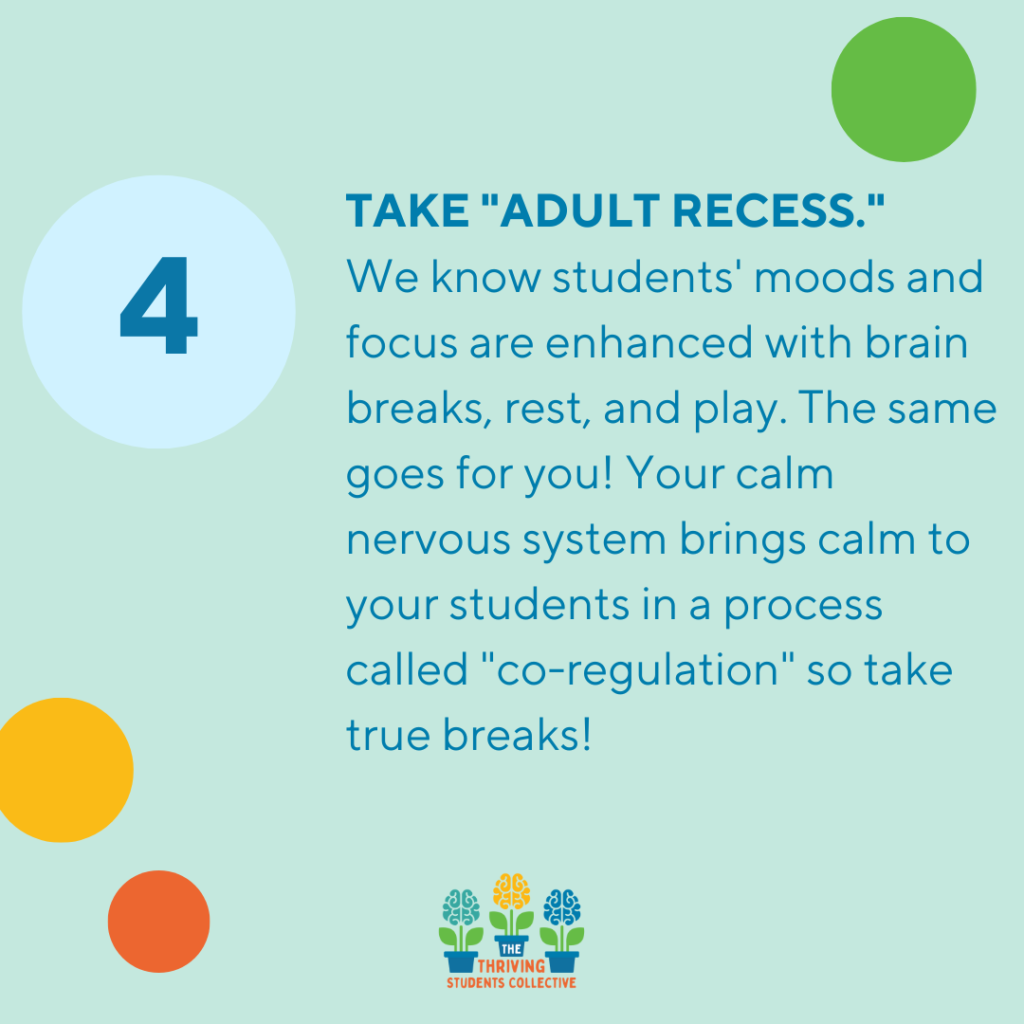
Let me ask you this: If you have a student who is dysregulated–either too hyped up/anxious or too lethargic–would you advise them to stay in for recess or work through a break? I don’t think so! And yet, as adults, we don’t always take needed breaks when we need to be more regulated emotionally or energetically.
Research shows skipping breaks and lunch can lead to faster burnout and higher stress levels. Employees stepping away from work for a few minutes increases their productivity, job satisfaction, mental health and well-being, and are overall more engaged in their work. But how can we remember and actually take breaks in our crazy days???
Enter: “Adult Recess.” (Yes, it’s a thing. I just made it up. So now it’s a thing.) What if when our students took a break, we also took a restorative break (away from email, our computers, planning, multitasking…all of it)?
And what might an adult recess look like for you? It may just be looking at a funny video on YouTube. It could be texting a friend and being like, what’s up? It could be having a nice, little coffee break with a colleague who’s inspirational and fun. Instead of plowing through recess doing more and more work, putting ourselves at risk for high levels of negative stress-related outcomes, let’s start using our recess wisely.
The research shows that when we pause and take breaks during the day (and it can be as little as 2 minutes, folks) we ultimately end up being, of course, happier and less stressed, but also (plot twist!) more productive. Even just 2 minutes in the day of mindfulness meditation, just pausing, breathing, and reflecting in your day can give you up to an hour of more productivity in the week. Breaks are not just a reward for a job well-done. They’re instrumental to our success and happiness.
And, when we are calm, rested, and regulated, we are better able to support our students in a process called “Co-regulation” where our regulated nervous systems serve as a model for students’ nervous systems to be regulated. So it’s a double down for healthy emotional space to promote executive functioning in the classroom.
5) Build Emotional Safety
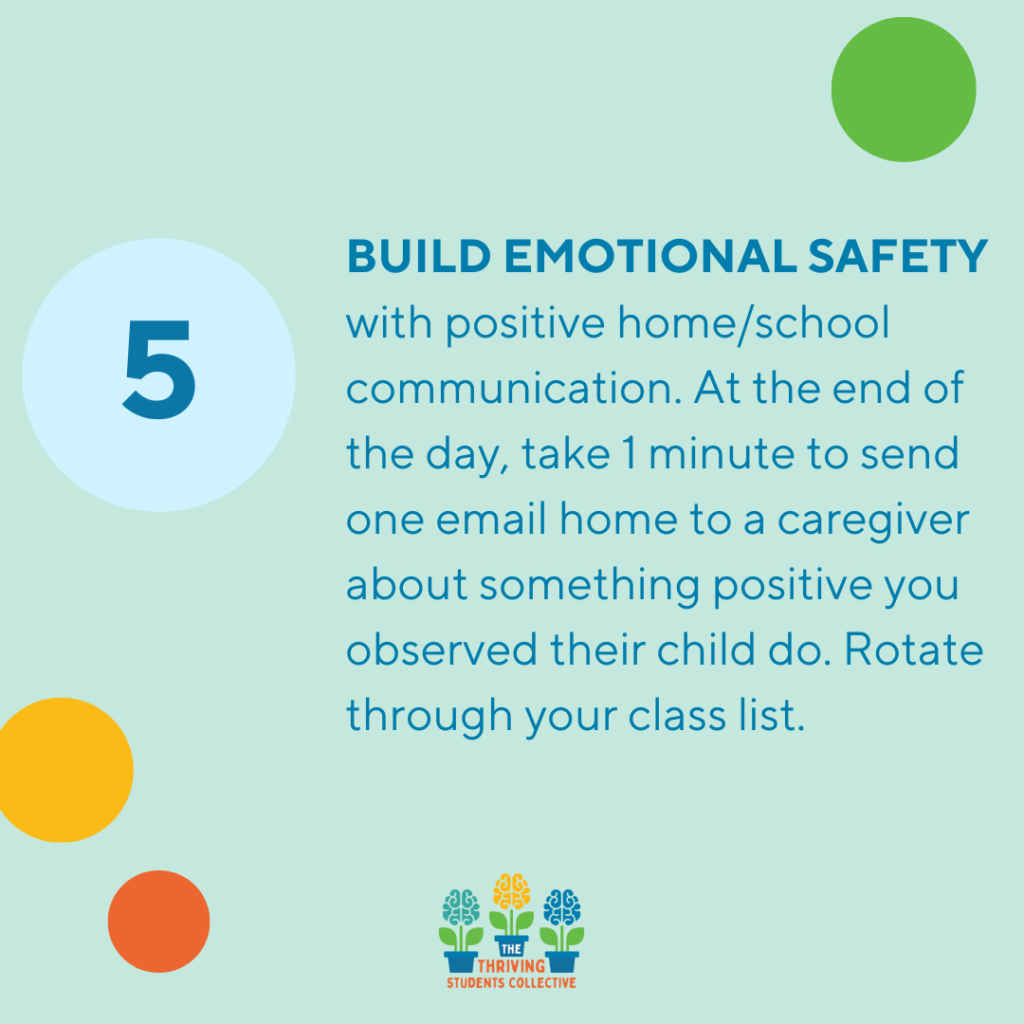
The research on the importance of the home-school connection on student outcomes is well documented. Research shows that when schools, parents, families, and communities work together, students:
- earn higher grades;
- attend school more regularly;
- stay in school; and,
- are more motivated.
This is true for students of all ages, all backgrounds, and across race and ethnicity.
If you’re an educator or school based mental health provider, you’ve likely experienced this many times–when you connect with a students’ family and seek to know about their life outside of school, you are more connected to the student and the student feels seen and heard. So how can you foster this sense of belonging and connectedness with families? And for you middle and high school educators out there, how can you do this when you have over a hundred students you see every day? Here’s a high-impact, low lift way to build emotional safety with your students:
Commit to sending one positive message home each day after school (or every Friday, send 5 in a batch if that’s easier). Use the communication tool that works best–calling, email, text, What’s App messaging, parent portal systems–anything that you think will reach the family and you are comfortable with.
It can be as simple and templated as, “Hello! This is your child’s teacher and I am reaching out to let you know that Student has a great week in my class. [Example here, like “I noticed them participating a lot in our discussion on X,” “She offered some really good ideas in classroom meeting” or “His book report was so well done”]. Just thought you’d like to know! Have a great day and I’m just an email away if you need anything.“
Imagine being a parent receiving this email, especially a parent of a child who is struggling, and emails home are not typically positive. These small acts can shift the energy to positive home-school collaboration. (And vice versa….if you’re a parent, sending a “gratitude, no ask” email to your child’s teacher can mean the world to them. Something simple like, “Before we head into the weekend I just want to let you know that my daughter loved your Reader’s Theatre project. Thanks for taking the time to create something so fun for your students.”
These small moments can stack up to opening channels to talk about ways to support students who may have executive functioning challenges, because a positive groundwork of trust has been built.
Download Our “How to Boost Executive Functioning” Cheat Sheet
Want a quick reference for yourself and to share with your colleagues? Click here to download!
